Frog External Anatomy
Purpose: For students who miss the frog dissection, this page can be a substitute. Be sure to download the frog dissection handout. You will complete it as your view images and read descriptions
1. This photo shows the external frog. Dorsal refers to the back side and ventral is the belly side. Note the difference in colors. This actually helps the frog stay hidden when it swims in water. Mouse over the the frog below to flip it.
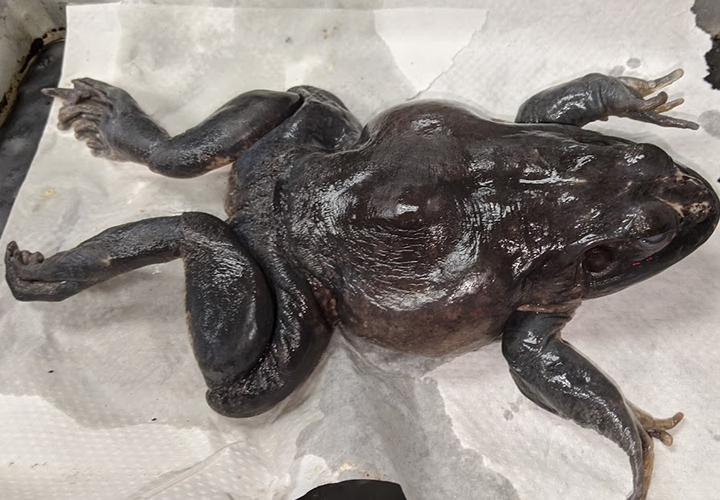
2. Examine the hind legs. How many toes are present? Are they webbed?
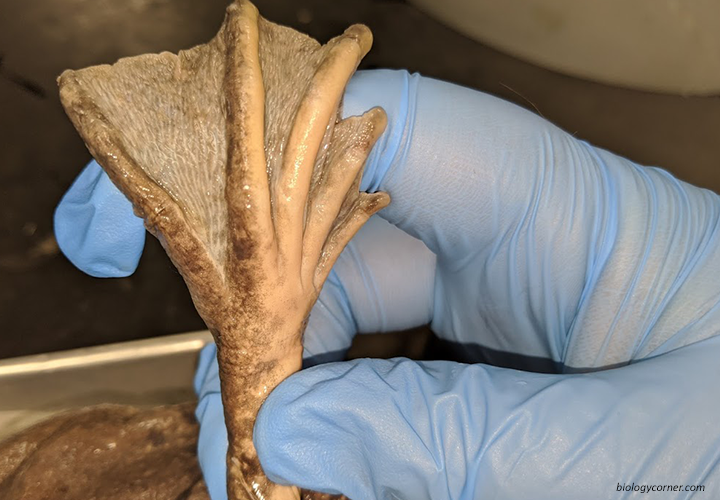
3. Examine the forelimbs. How many toes are present? Are they webbed?
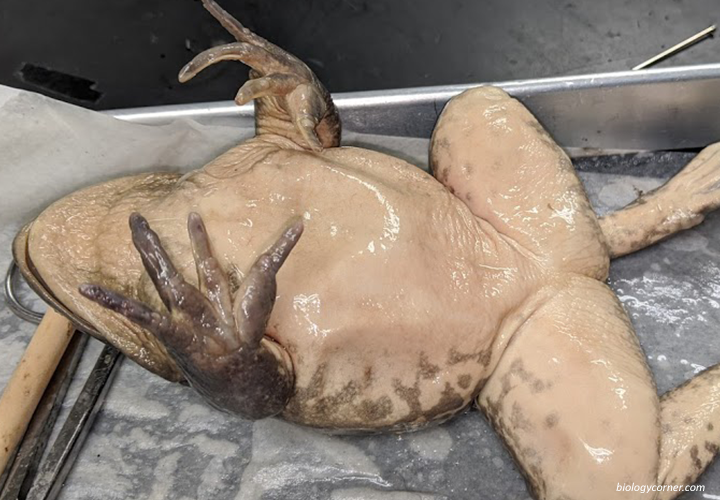
4. Use a ruler to measure the frog from the tip of the frog to the base of its spine. The frog in the photo is a bullfrog, some members of the class were able to dissect the larger frogs, but most dissected smaller grass frogs.
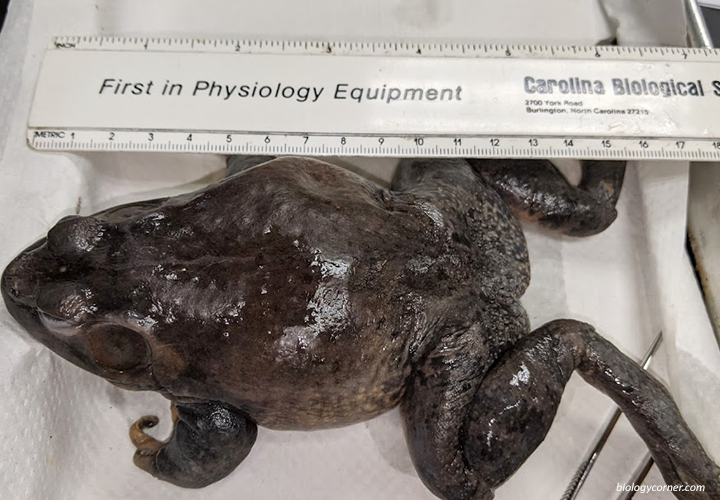
Data from other bullfrogs: 14.5 cm, 10.2 cm, 12.0 cm, 11.5 cm. You will need to calculate the average.
5. Examine the nictitating membrane. The eyeball of a preserved frog is usually a yellow color.
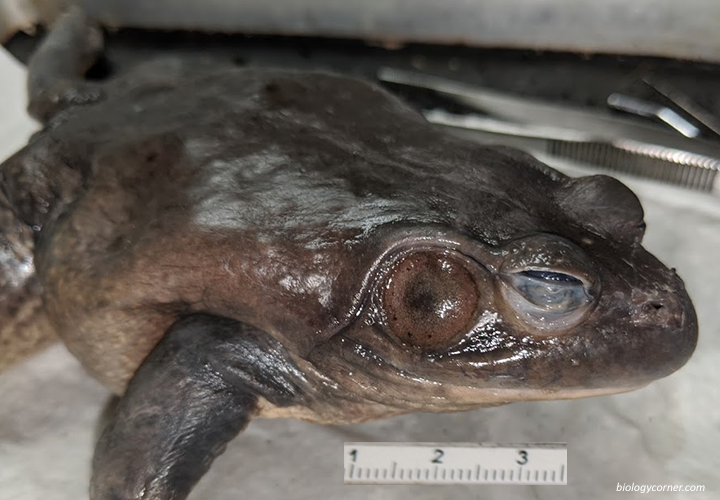
6. Use the ruler in the image to determine the diameter of the tympanic membrane.